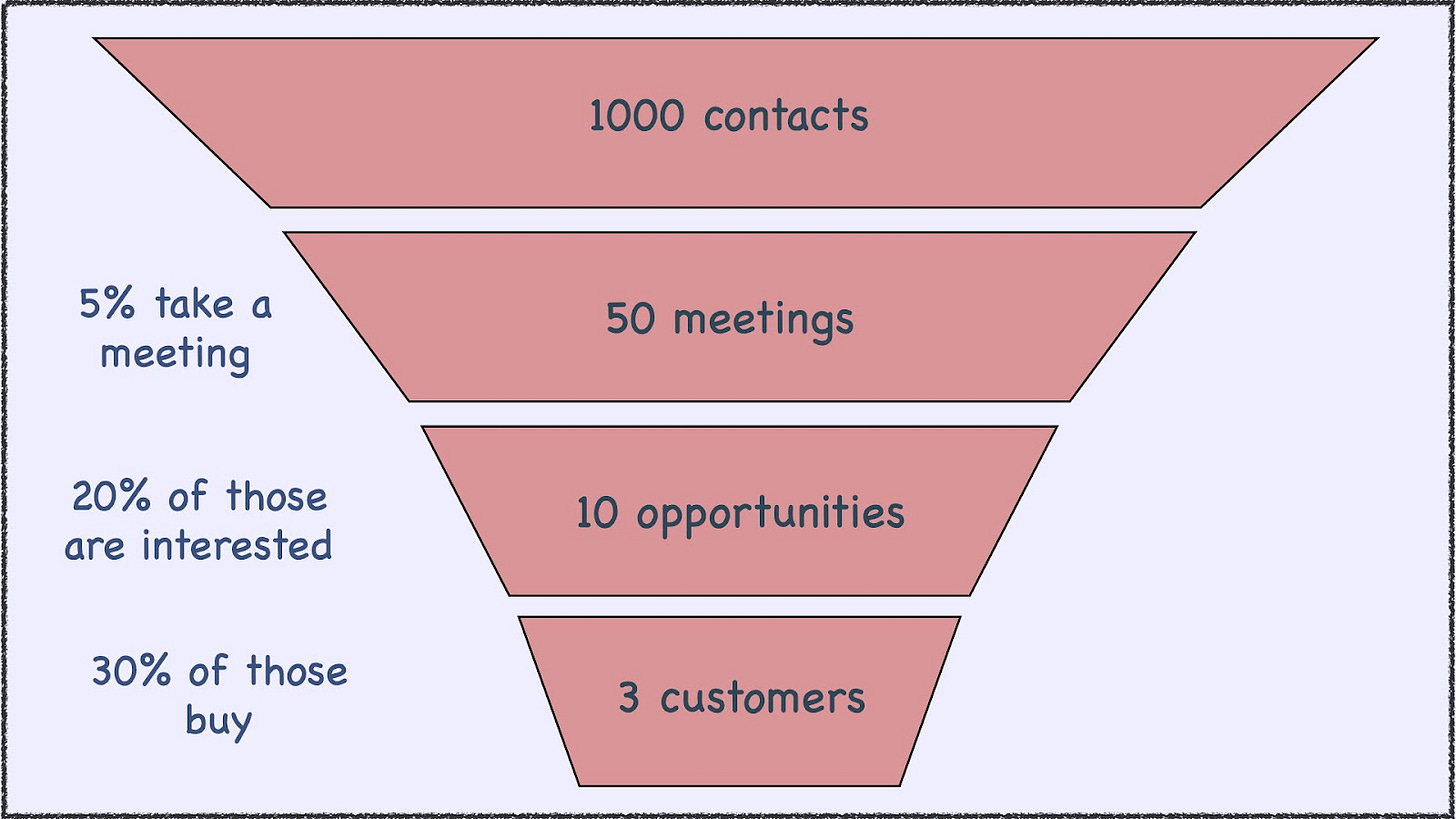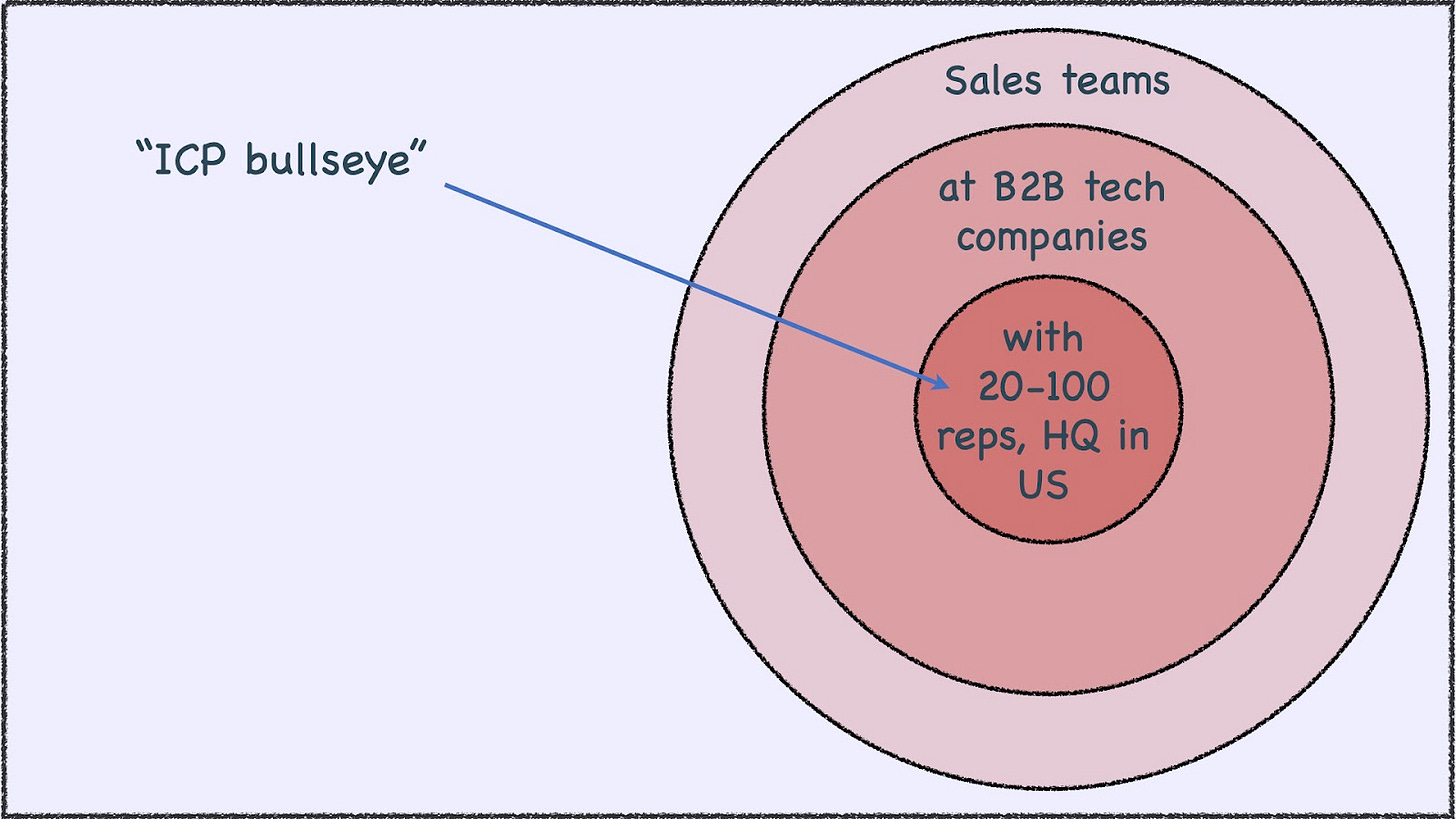Spread the Good Word
Or how your startup can reach prospects who don’t know you but should
The Next Founder helps founders build great startups. We offer advice on managing your mental health and productivity, hiring and managing great people, building a strong culture, and keeping people aligned and working on the right things. See the series overview at Welcome to The Next Founder and find out more about me at My Story.
Start where you are. Use what you have. Do what you can."
— Arthur Ashe
“All you have to do is write one true sentence. Write the truest sentence that you know.”
— Ernest Hemingway
"If you don’t ask, the answer is always no."
— Nora Roberts
It’s Quiet, Too Quiet
After months spent recruiting a co-founder and pitching your local startup accelerator, you finally got accepted and are working full-time on your startup. You were ready to spend your days on customer calls, pitching your product to buyers, blowing them away with your brilliance, and watching your Stripe account light up like a Vegas slot machine.
That, well, hasn’t happened. Your office is so silent you can hear the ticking of the tell-tale wall clock, and tumbleweeds are blowing through your Zoom account.
The advisors at your accelerator advise you to do one thing: get more customer meetings! They remind you that meetings are the lifeblood of a B2B startup, where every meeting is a chance to get feedback on your product, refine your pitch, and add prospects to your pipeline.
Duh. You wonder if those advice-dispensing advisors know precisely how hard it is to get those meetings. You spent two hours last week sending 50 emails and LinkedIn requests and haven’t gotten a single reply. You could devote more time, but with a 0% conversion rate, doubling or tripling your outreach would…crunching the numbers…still land you at 0.0 meetings.
And the time you spend reaching out to a cold and uncaring world is time you could spend on your product. You started a company to deliver breakthrough innovations, not deliver annoying spam.
Don’t feel too bad: struggling to get prospects’ attention in the early stages is normal, but you do have to solve it. You have to learn to Spread the Good Word.
The Connecting Core Competence
I mentor early-stage founders through programs like Stanford’s StartX and Entrepreneurs First, which makes me the annoying advisor from our vignette saying, “More meetings, more meetings, more meetings!” This essay is an attempt to offer some tips on how to get those meetings.12
Most founders know they can’t just build a great product and hope people find it, even if they hope to deploy a product-led growth model eventually. They must talk to customers to get product feedback, test their pitch, and recruit their first customers. Those founders usually end up like the founder from our vignette when they discover how hard it is to get customers’ attention with no brand, references, or marketing team.
Cold outreach isn’t just a skill you’ll need while getting your first few customers, and it’s not just a skill you need if you sell to large enterprises. It’s a skill you need if you want to:
Raise money - You’ll probably need to reach out to dozens of potential investors who haven’t heard of you and get meetings with them.
Hire key talent - You’ll have to reach out to candidates who might not even be in the market to encourage them to talk to you.
Sell to mid-to-large enterprises - Even if your startup makes product-led growth happen, if you want to go upmarket, you’ll have to learn to reach out to prospects who don’t know about you yet.
Enter new markets - as you break into new verticals or geographies, you’ll have to go back into startup mode to find the first few customers in those markets.
Being great at cold outreach is a high predictor of startup success. It’s not easy, and nothing guarantees good results, but you can try a few things:
Respect the Role
Founders sometimes struggle with cold outreach because they haven’t done the job before and don’t really want to do it. They see it as grubby and beneath them. They have to change that mindset.
Some people do cold outreach to prospects for a living; they are called Sales Development Representatives (SDRs). Good SDRs are truly impressive. They are creative, resourceful, and persistent. Congratulations, you have now joined their ranks.
SDRs approach the job with energy and enthusiasm. They love the thrill of the chase. They are incredible at handling rejection and will tell you they had a great week if they got 10 solid customer meetings, even if they had to reach out to 200 prospects to get those meetings. They love to tinker with different approaches.
Most of all, SDRs know pipeline math, which is brutal. Let’s say your goal is to sign three paying customers before you raise your seed round. If only 5% of the people you reach out to agree to meet you, 20% are interested, and 30% of those become paying customers, that’s over 1000 prospects you have to reach, many more than once.
You can’t just fire off a few dozen messages and get discouraged when the unsubscribes roll in. You have to devote hours and hours every week, and you need to test and experiment with different approaches.
The difficulty of the task is why the “hacker and hustler” founding team is so effective. To have any hope of success, one of the founders has to spend most of their time trying to reach prospects and experiment relentlessly with better ways to do it.
The founders won’t be your company’s only SDRs forever — you’ll eventually hire people to take on much of the load, but you are more likely to hire a great SDR team once you appreciate what the job takes and candidates see how much you value it. And you can never delegate reaching out to potential investors, partners, acquirers, and key senior hires.
Position as a Missionary
Cold outreach is painful since you’ll need to reach out to hundreds or thousands of people and get rejected most of the time. You might get frustrated, discouraged, or even want to quit.
Doing a hard thing is always easier when you strongly believe in your mission. Your outreach will work better if you have a firm conviction that you are doing prospects a favor by telling them about you:
You’ll be able to power through the hard work and rejection since you’ll honestly believe you are doing customers a favor by sharing your solution with them.
When you do reach a customer, they’ll be more likely to respond since they’ll pick up on your energy and enthusiasm about how you can help them.
You’ll develop more powerful messaging and value propositions when they are rooted in a conviction that you can help solve customers’ most important problems.
So, before you fire up your browser to send off a batch of messages, remind yourself why you started your company in the first place and picture the customers who will be grateful you connected with them once you’ve solved their problems.
Pick Your Profile
Like everything else at a startup, cold outreach relies on knowing your Ideal Customer Profile (ICP) and the specific titles and roles in those companies who will buy from you (Ideal Buyer Profile). When you know your customer, you are more likely to build the right product, develop the right messaging and value proposition, and concentrate your outreach on prospects most likely to respond.
For example, “We sell to sales teams” is too broad to get you far; the world has millions of sales teams. You can’t reach out to a team but only to a specific person, and that person has a title, responsibilities, and goals. A more focused ICP/IBP, like, “We sell to Directors of Sales at B2B software companies between $50 and $500 million in revenue based in the United States” makes it more likely you’ll know who to target and develop messages that resonate with them.
If you are so early that you haven’t settled on an ICP, you can use your outreach to test different ICPs, but just make sure the result is a focused ICP and not “all of the above.”
Work Your Network
You are probably more likely to respond to a request if it comes from someone you know and trust, so assume the people you want to reach are the same way. Successful startup founders often recruit most of their first customers via introductions from friends, family, colleagues, and investors.
You might assume those founders had better networks than you do, but your network is probably better than you think. Your network is not only your immediate friends, family, classmates, and co-workers but also theirs. You just need to learn how to connect those dots.
List the people you are trying to target, and then see if you can map a path to them. Does a connection of your uncle work at the same company? Did your boyfriend’s father go to school with them? The answer is usually “no,” but you’ll be surprised how often it’s “yes”.
When you find a connection, even a tenuous one, be aggressive about asking for an introduction. Be clear about why you think you can help the person you want to reach (you’re a missionary, remember?) Make it as easy as possible to make the introduction by writing a draft of the introduction message they can forward instead of putting the burden on them to write it.
Speak How You Like to Be Spoken To
You are probably bombarded with marketing messages, and your brain has developed heuristics to make snap judgments about which are worthwhile. The instant you glimpse “breakthrough solution!” Or “You can’t afford to wait!” Your mental spam filter is triggered.
But for some reason, many founders send messages to prospects they’d never respond to themselves, as if some marketing god in the sky insists that sending spammy and gimmicky messages is the “right” way to do marketing. It’s not.
Talk to people the way you want them to talk to you:
Be human — “write like you talk” is always good advice, and it’s especially true for cold outreach. Be friendly, conversational, and respectful. Cut the jargon, keep your messages short, and get to the point.
Put them in the center — people aren’t that interested in the history of your company and your long list of product features. They care about how you can help them. Yes, make sure your personality comes through, and establish credibility with success stories from other customers, but put the focus on how you can help them. Don’t drone on about your “mission.”
Be personal — highlight something you have in common with the recipient, like a hobby, school, city, or previous job. Research the company and comment on the challenges someone in their role may face.
Ask for something small and specific — you aren’t asking the recipient to write you a big check or to sign up for a lengthy sales pitch. Ask for something small that will tangibly move the conversation forward, usually a short meeting where you learn more about them, show your product, and propose next steps.
Leverage tools, but not too much — the market is loaded with AI-based outreach tools to help you run these campaigns3. These are most helpful when you know who you want to reach and what messages resonate with them, so don’t scale them prematurely. Devote hands-on time to personalize your messages and experiment with different approaches. Don’t be afraid to “do things that don’t scale.”4
These tips only scratch the surface of what it takes to master cold outreach. Those who do it for a living are experts in getting customers to respond, and you can find all kinds of videos and blogs with more tips and tricks. The point is to take it seriously and spend time learning the craft.
Embrace Who You Are
You have plenty of disadvantages as a startup with no brand, a small team, and few customers, and you shouldn’t expect a prospect to respond to you unless you offer something that the established incumbents in your market don’t already offer. It might be easier than you think.
Instead of apologizing for being a startup, turn it into a strength:
Leverage your founder superpower - Buyers get pitched by SDRs and sales reps all day, but they don’t get many chances to talk to founders. Try using your real name, be clear that you are a founder passionate about your product, and see if you get better conversion rates.
Offer customers a chance to innovate - most buyers are pitched products developed long ago and rarely get a chance to steer a new product. Ensure your early buyers know they’ll have the chance to work closely with your team to shape a new product and category.
Focus on your differentiators. Assume buyers have already heard from competitors, including the stodgy incumbents in your market. Position yourself as an innovator not by listing everything you do but by focusing on where you are most differentiated.
“Fake it until you make it” still has its place — you should project the confidence of a founder who is convinced they will build a successful company, but don’t pretend you are something you aren’t. Be proud to be a disruptor who can do things no one else can.
Recruit Co-Conspirators
You should constantly experiment with which tactics and messages get prospects in your ICP to respond. You can do this by running tests and analyzing the results, but you can also do something simpler: just ask them.
When you do manage to get a meeting with a good prospect, leave some time to ask questions like:
“I’m sure you don’t respond to many messages. What was it about mine that got you interested?”
”Did you know about solutions like ours before you talked to me?”
“Are you getting approached by other companies with competing solutions? What did you like and not like?”
”Now that you know what we do, how do you think we can get your peers to respond?”
Yes, you are allowed to do this. Buyers are just people; many enjoy meeting and helping startups, and they might picture themselves getting a promotion after bringing an innovative solution into the company or giving a keynote at your conference. And remember that their meeting with you might be the most fun they have all day.
Evangelize At Real-World Events
If you are lucky, you work in an industry with trade shows and conferences that do you the favor of gathering your buyers in one place. Take advantage. Don’t be that startup that spends months blasting prospects with emails when those same prospects are boozing it up down the street at the Marriott Marquis, all wearing badges that make them easy to identify. Find a way to get into that room (or at least lurk in the lobby bar).
I know many startup founders who found a way to get into an industry event and made more progress from two days working the room than they had from weeks of cold outreach, having dozens of conversations with attendees.
Events might seem like an approach that doesn’t scale, but you aren’t trying to scale in your early days. You are just trying to get in front of as many customers as possible.
Besides, it might turn out that events do scale for you, especially if you are selling to midsize or large enterprises. Many startups generate leads from events. There is a reason that 45,000 people show up at Dreamforce every October in San Francisco, wearing their badges around town.
Take cold outreach seriously, respect the function, put in the time, and get great at it. Soon, you’ll build a following. Good luck!
If you have feedback or suggestions for future posts, please comment or contact us at michael@nextfounder.co.
YCombinator has dozens of great videos for founders. I found How To Convert Customers With Cold Emails by Aaron Epstein very useful while writing this essay.
This SaaStr post also has great tips for how to get your first customers, starting with getting them to respond to your outreach.
This TechCrunch article discusses a few of the more recent new entrants into the market, but it only represents a snapshot in time since the market is constantly changing.
I could reference Paul Graham’s Do Things That Don’t Scale from practically any one of my essays.




